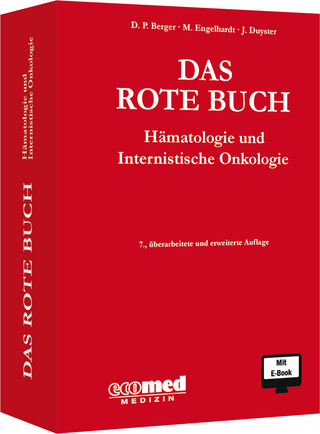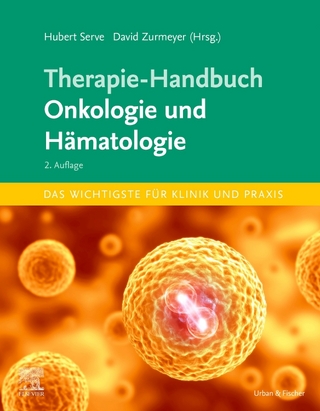
Biotechnology of Blood
Newnes (an imprint of Butterworth-Heinemann Ltd ) (Verlag)
978-0-7506-9120-8 (ISBN)
- Titel ist leider vergriffen;
keine Neuauflage - Artikel merken
Biotechnology of Blood presents research on applications of biotechnology to blood and its components. The book is organized into four parts. Part I begins with an overview of the blood business in order to provide background of the industry, to identify problems, and perhaps some solutions that rely on the scientific advances made possible by biotechnology. This is followed by studies on the storage and preservation of red blood cells; autologous blood salvage procedures; the development procedures to provide a constant supply of blood group O; and the development of blood substitutes. Part II on plasma fractions includes studies on the preparation of plasma fractions, recombinant antihemophilic factors, and fibrinogen. Part III on the regulation of blood cell products includes studies such as hematopoietic stem cell processing and storage; and long-term bone marrow cell cultures. Part IV on blood-borne diseases examines the inactivation of viruses found with plasma proteins and viruses found with cellular components.
Part I. Oxygen Delivery Systems
1. Biotechnology, Economies, and the Business of Blood
1.1 Cellular Components and Biotechnology
1.2 Plasma Products
References
2. Long-Term Storage and Preservation of Red Blood Cells
2.1 Current State of Liquid Preservation at 4°C
2.2 Current Research in Nonfrozen Systems
2.3 Frozen Red Cells
2.4 Post-Thaw Preservation of Red Cells
2.5 Conclusions
References
3. Autologous Blood Salvage Procedures
3.1 Advantages of Autologous Transfusion
3.2 Clinical Applications
3.3 Contraindications
3.4 Intraoperative Blood Salvage Devices
3.5 Postoperative Blood Salvage
3.6 Complications
3.7 Characteristics of Salvaged Blood
3.8 Administrative Considerations
3.9 Summary
References
4. The Production of Group O Cells
4.1 Biochemistry, Genetics, and Formation of the ABO Blood Group Antigens
4.2 Treatment Conditions Compatible with RBC Viability
4.3 Enzymatic Conversion of Group B RBC to Group O: In Vivo Studies
4.4 Enzymatic Conversion of Group A RBC to Group O: In Vitro Studies
4.5 Future Perspectives: Rh Modification
References
5. Chemically Modified and Recombinant Hemoglobin Blood Substitutes
5.1 Regulation of the Oxygen Affinity of Hemoglobin
5.2 Dissociation of the Hemoglobin Tetramer
5.3 Chemical Modification of Hemoglobin
5.4 Purification of Hemoglobin
5.5 Autooxidation of Hemoglobin
5.6 Recombinant Production of Hemoglobin
5.7 Summary
References
6. Liposome-Encapsulated Hemoglobin: Historical Development of a Blood Substitute
6.1 Fabrication
6.2 In Vivo Studies
6.3 Future Directions
References
7. Medical Oxygen Transport Using Perfluorochemicals
7.1 History of Perfluorochemicals in Oxygen Transport
7.2 Data on the Use of PFC Emulsions
7.3 Medical Applications and Clinical Studies
7.4 Future Perfluorochemical Products
7.5 Conclusion
References
Part II. Plasma Fractions
8. Current Approaches to the Preparation of Plasma Fractions
8.1 Albumin
8.2 Plasma Protein Fraction
8.3 Antihemophilic Factor (Factor VIII, or AHF)
8.4 Immunoglobulins
8.5 Fibrinogen
8.6 Prothrombin Complex
8.7 Activated Prothrombin Complex Concentrates
8.8 Antithrombin III
8.9 Current Equipment and Technologies Used in Plasma Fractionation
References
9. Recombinant Antihemophilic Factors
9.1 Factor VIII
9.2 Factor IX
9.3 Factor VII
9.4 Other Recombinant Coagulation Factors
9.5 Conclusion
References
10. Recombinant Tissue-Type Plasminogen Activator
10.1 The Fibrinolytic System
10.2 Nonrecombinant Tissue-Type Plasminogen Activator (t-PA)
10.3 Recombinant Tissue-Type Plasminogen Activator (rt-PA)
10.4 Mutants and Variants of Tissue-Type Plasminogen Activator
10.5 Conclusions
References
11. Fibrinogen and Fibrin Formation and Its Role in Fibrinolysis
11.1 Introduction
11.2 Physicochemical Properties of Fibrinogen
11.3 Chains and Prosthetic Groups of Fibrinogen
11.4 Primary Structure of Fibrinogen
11.5 Activation of Fibrinogen
11.6 Fibrin(ogen)olysis in Presence of Plasmin
11.7 Interaction of Fibrinogen and Fibrin with Ions, Plasma Proteins, and Cells
11.8 Biosynthesis of Fibrinogen
11.9 Evolution of Fibrinogen and Hemostatic Mechanisms
11.10 Role of Fibrinogen in Health and Disease
References
12. Fibrinogen-Fibrin: Preparation and Use of Monoclonal Antibodies as Diagnostics
12.1 Fibrinogen-to-Fibrin Transition and Fibrin(ogen)olysis
12.2 Monitoring Blood Levels of Fibrin(ogen) Degradation Products
12.3 Characterization of Fibrin(ogen) Antigens in Tissues
12.4 Monoclonal Antibodies as Thrombus Imaging Agents Abbreviations and Terms
References
Part III. In Vivo and In Vitro regulation of Blood Cell Production
13. Hematopoietic Stem Cell Processing and Storage
13.1 Hematopoietic Stem Cell Collection and Processing
13.2 Hematopoietic Stem Cell Storage
13.3 Summary and Conclusions
References
14. Erythropoietin: Its Role in the Regulation of Erythropoiesis and as a Therapeutic in Humans
14.1 The Erythropoietin (Epo) Gene
14.2 Regulation of Epo Production
14.3 Plasma Epo
14.4 Interactions of Epo with Its Target Cell
14.5 Epo as a Therapeutic Treatment
14.6 Summary
References
15. Hematopoietic Colony-Stimulating Factors
15.1 Biotechnology of CSFs
15.2 Multi-CSF
15.3 GM-CSF
15.4 G-CSF
15.5 M-CSF
15.6 Summary
References
16. Long-Term Bone Marrow Cell Cultures
16.1 Evolving Hierarchy of Hematopoietic Progenitors
16.2 Hematopoietic Microenvironment
16.3 Clinical Applications—Current and Future
References
Part IV. Blood-Borne Viral Diseases
17. Inactivation of Viruses Found with Plasma Proteins
17.1 Viral Risk from Single Units of Blood
17.2 Viral Risk from Plasma Protein Fractions
17.3 Summary and Conclusion
References
18. Inactivation of Viruses Found with Cellular Components
18.1 Physical Methods for Virus Removal or Inactivation
18.2 Immune Neutralization
18.3 Hydrolyzable Chemical Agents
18.4 Photosensitization Techniques
18.5 Irradiation Methods
18.6 Summary and Conclusions
References
Index
| Erscheint lt. Verlag | 6.9.1991 |
|---|---|
| Verlagsort | Oxford |
| Sprache | englisch |
| Maße | 156 x 233 mm |
| Themenwelt | Medizinische Fachgebiete ► Innere Medizin ► Hämatologie |
| Medizin / Pharmazie ► Physiotherapie / Ergotherapie ► Orthopädie | |
| Technik ► Medizintechnik | |
| Technik ► Umwelttechnik / Biotechnologie | |
| ISBN-10 | 0-7506-9120-4 / 0750691204 |
| ISBN-13 | 978-0-7506-9120-8 / 9780750691208 |
| Zustand | Neuware |
| Haben Sie eine Frage zum Produkt? |
aus dem Bereich


